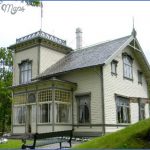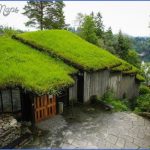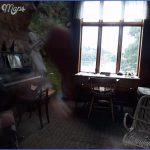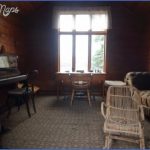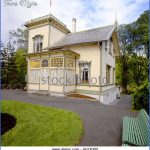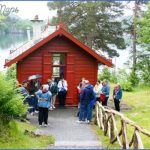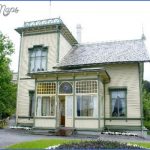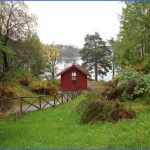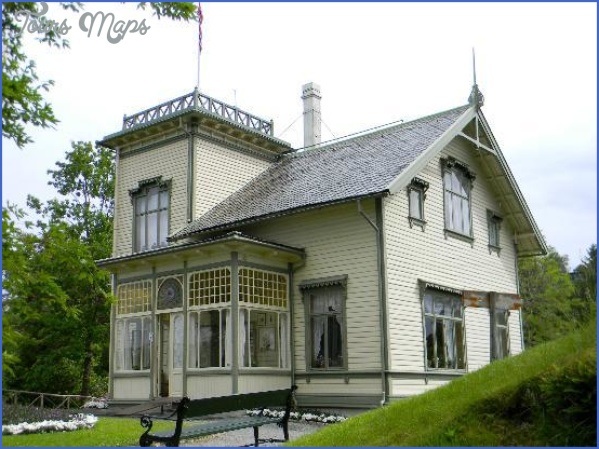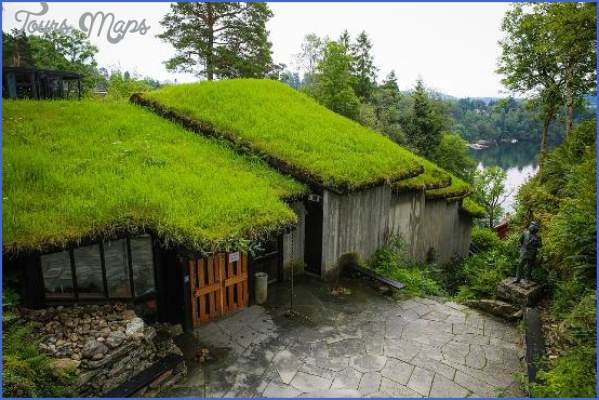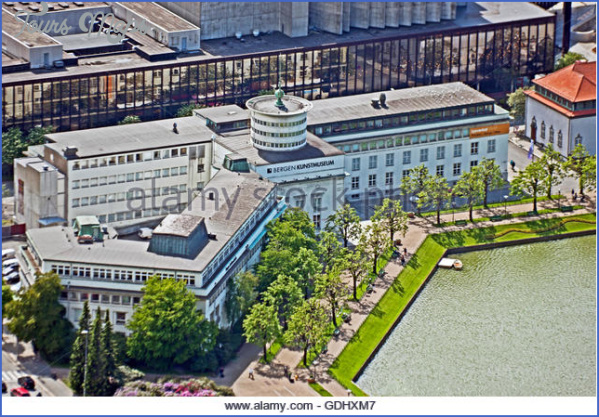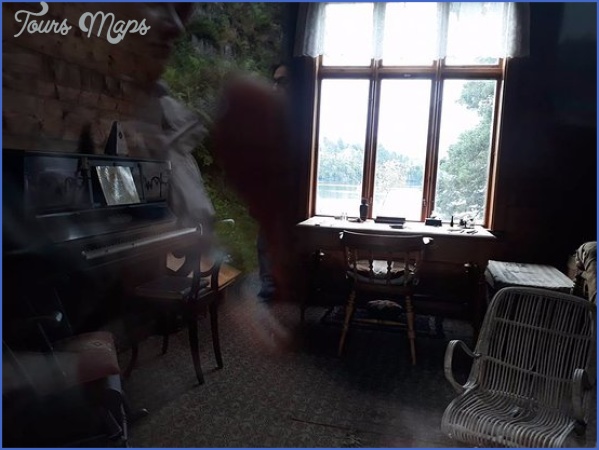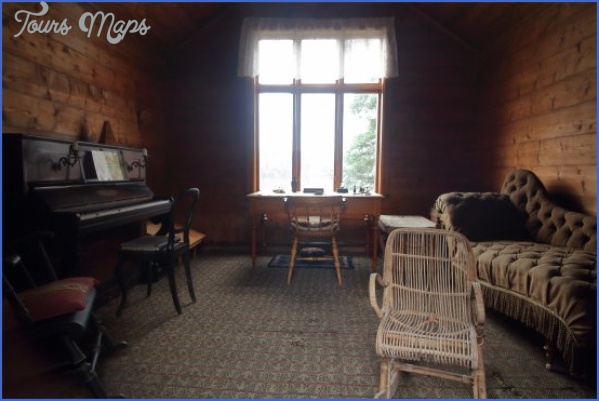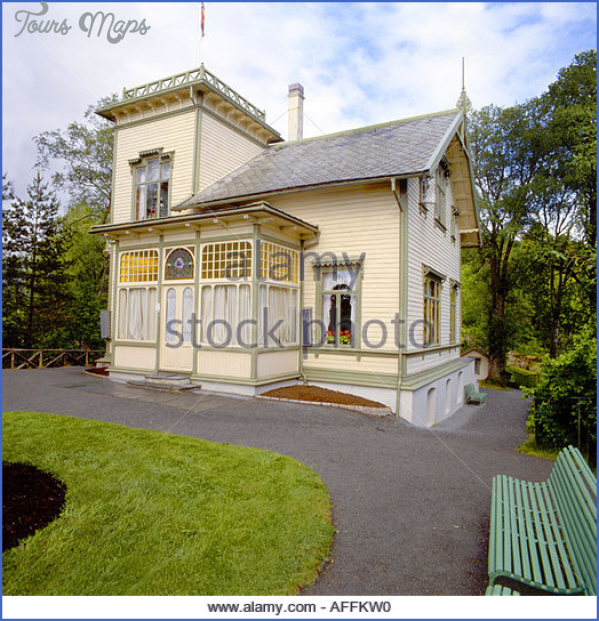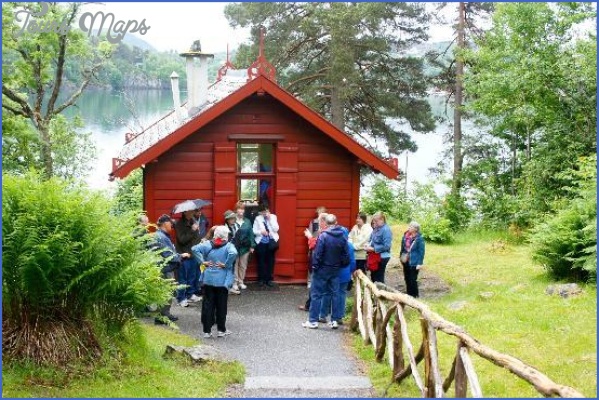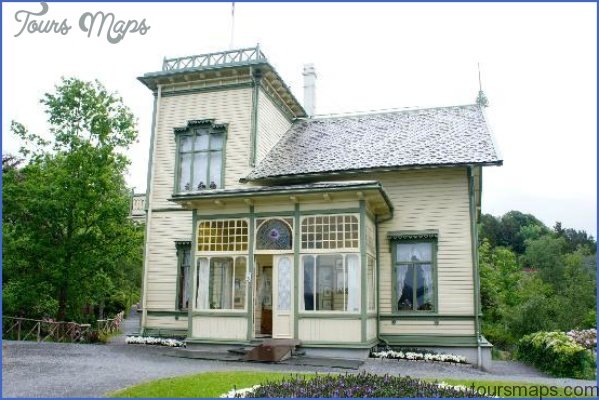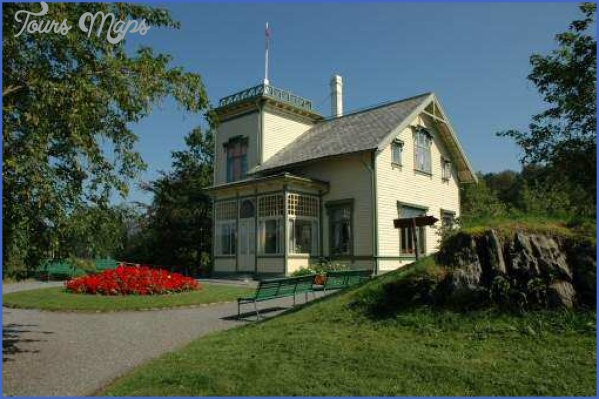Troldhaugen Museum
Troldhaugen (Troll Hill), about ten kilometres south of Bergen in the fjords of western Norway, was the home of Edvard Grieg (b 1843) and his wife Nina. During the first 18 years of their marriage they had lived in rented accommodation and as peripatetic guests, but in 1885 they decided to acquire a property of their own and built a rustic villa near that of their friends Frants and Marie Beyer on the shores of Nordasvannet. It was intended as a summer retreat; during the winters Grieg continued to be much in demand abroad as a soloist and conductor.
His wanderlust had been encouraged by the renowned Norwegian violinist Ole Bull, who had recommended to Grieg’s parents that they send their son to study in Leipzig in 1858. He spent some years in Denmark and then in Christiania (Oslo). But the rugged beauty of western Norway drew him back, especially in the summers: first to the Bergen suburb of Landas where his parents had a house at Kanonhaugent 39 (today a vicarage), then to Lofthus, further inland in the Hardanger fjord region, before he and Nina finally settled in 1885 in the wooded valley south of Bergen. Even then, Grieg sometimes felt the need to escape from Troldhaugen, especially when the pressures of entertaining the inevitable endless stream of seasonal guests from abroad prevented him from finding the peace and the time he needed for composition.
The Griegs rented lodgings at Lofthus in the late 1870s. To have somewhere
Grieg’s house at Troldhaugen Rights were not granted to include these illustrations in electronic media. Please refer to print publication Grieg’s composing hut at Lofthus where he could concentrate on his work, Edvard had a little slate-roofed hut built. He furnished it simply, just with a piano, a table and a stove; there, on the banks of S0rf Jorden, he composed the G minor String Quartet. Bull visited him there on his birthday (15 June) in 1879. The hut was sold in December 1880 and, after serving for a time as a hen coop, it was moved to the grounds of the nearby Hotel Ullensvang and restored. It is still there.
Troldhaugen Museum Photo Gallery
Grieg’s hut at Troldhaugen is a well-known image. A larger version of the Lofthus hut, it is perched near the edge of the water, out of sight of the house, and furnished with a Norwegian piano, a stove, a rocking chair, a table, a chair and a chaise longue. Grieg referred to it as ‘the office’. There he composed the Violin Sonata in C minor, the Symphonic Dances for Orchestra and the Four
Grieg’s composing hut at Troldhaugen
Psalms for a cappella choir as well as numerous piano pieces and songs. The edition of Beethoven piano sonatas that served as a booster for the diminutive Grieg at the piano still graces the chair.
The painted wooden house in which he and Nina lived, with its porch, stained glass and little tower, has been open to the public since 1928. Grieg died in hospital in 1907, but chose to have his ashes interred in the rocks below the house, overlooking the fjord. Nina continued to come every summer until 1919, when Troldhaugen was sold to a cousin, Joachim Grieg, who subsequently gave it to the local council on condition that the composer would be permanently honoured there. The furnishings, however, were auctioned off. When Nina died in 1935, her ashes were interred next to her husband’s. The museum was established the following year in cooperation with the Bergen Public Library, which owns the Grieg Collection, including manuscripts and letters. The dining-room and drawing-room were recreated with all their carved wood, velvet and lace furnishings, just as they had been in 1907: the Steinway grand piano specially adapted for the small composer and given to the couple on their 25th anniversary by friends in Bergen was installed once again in the drawingroom. The kitchen and pantry, however, became the repository for a series of portraits of Grieg by Erik Werenskiold as well as a collection of personal items (a lock of hair, his jacket and hat, trunk, walking stick and fishing pole) and photographic and written accounts of his funeral. The upstairs rooms became the caretaker’s flat.
The recitals given at the house during the summer became part of the Bergen International Festival when it was inaugurated in 1953. The much-needed Troldsalen, a medium-sized recital hall, was built in 1985, discreetly hidden, partly underground, with nature – the rocks, flora and fjord – and his composing hut its breathtaking backdrop (see p.64). A lifesize statue of Grieg greets visitors at the entrance. There are concerts on Saturday afternoons and
Maybe You Like Them Too
- Top 10 Islands You Can Buy
- Top 10 Underrated Asian Cities 2023
- Top 10 Reasons Upsizing Will Be a Huge Travel Trend
- Top 10 Scuba Diving Destinations
- World’s 10 Best Places To Visit

